Travels in Southeast Asia, a Floricultural Gem
What a traveller sees through their camera’s eye says a lot about them. A scan through my recent South East Asia pictures reveals an abundance of greenery and plentiful edibles: this sums up my life as well as my trip.
While abroad, the focus on flora creates a pause amidst the landslide of travel stimulation. Once home, my photos of spiky durian fruit or the flesh of a ghost gum tree readily evoke those ephemeral moments.
Here I'll share a few of my Thai and Vietnamese discoveries. Some plants provide testimony to regional ecosystems. Some are momentos of transcontinental trade. All hold a specific story tied to the landscape of place.
Samsen Road, Bangkok, Central Thailand
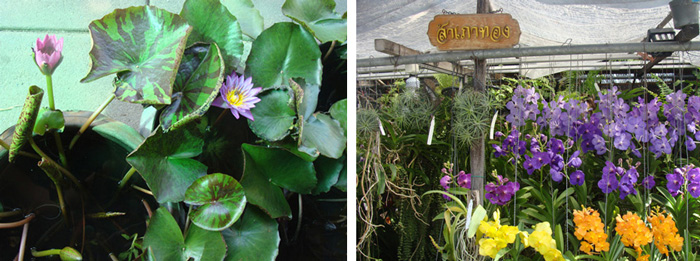 I left Canada for South East Asia in January, going from -13°C to 35+°C. After my arrival in Bangkok, I reeled my way towards the tourist circus of Khao San Road. Each step under the noonday sun took me deeper into the varied, rich, rambunctious street life of Thailand's capital city.
I left Canada for South East Asia in January, going from -13°C to 35+°C. After my arrival in Bangkok, I reeled my way towards the tourist circus of Khao San Road. Each step under the noonday sun took me deeper into the varied, rich, rambunctious street life of Thailand's capital city.
Along the bridge on Samsen Road was a busy marketplace. The buzz of motorcycles melded with the bartering of vendors. But when I turned the corner, a long row of plant stalls created a calm, oxygenated oasis. It immediately slowed me down, and the greenery provided a welcome respite from my culture shock.
Above is a clay pot of lotus flowers, a traditional flower in Buddhist culture and a keystone in Thai gardens. To the right are long strands of cultivated hanging orchids, the largest vascular native plant species in the country.
Day Market, Krabi Town, Southern Thailand
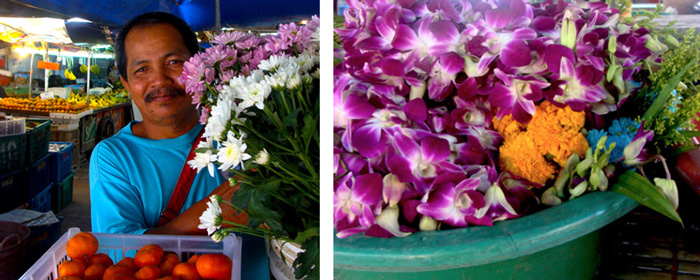 Krabi town, set in the long beaches of southern Thailand, boasts both a day and a night market. The night market serves Thai food down by the river every evening. Fried noodles and fast-paced orders abound, and everyone sits at rickety tables to slurp the fragrant delicacies.
Krabi town, set in the long beaches of southern Thailand, boasts both a day and a night market. The night market serves Thai food down by the river every evening. Fried noodles and fast-paced orders abound, and everyone sits at rickety tables to slurp the fragrant delicacies.
The day market is in the centre of town. Amongst the papayas, roasted corn, coconuts, and mangosteens are the vibrant wares of the flower vendors. The fellow above saw me taking photos and posed beside his cut flowers and sweet mandarins. Also on sale were garlands to decorate ancestor altars and Thai spirit houses. The orange marigolds and fuchsia orchids are common and affordable flowers in Buddhist worship.
NEED BURMA Farm, Chiang Mai, Northern Thailand
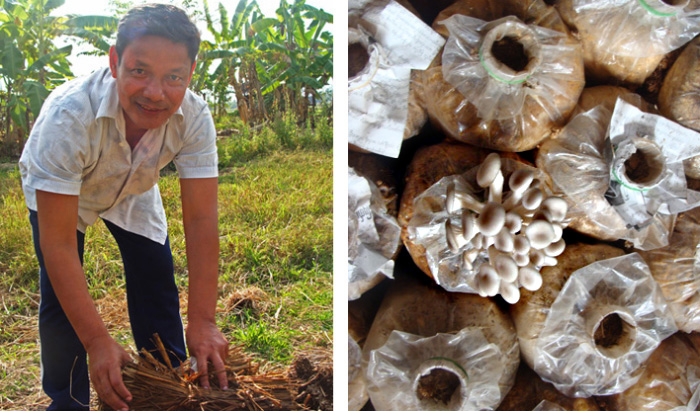 One poignant travel destination was a farm-learning centre my late friend Nic helped establish in 2008. Now thriving, the farm provides Burmese refugees with a skills-building program in sustainability and organic agriculture. In the slow heat of the afternoon, I got a tour of the farm, admiring the balanced mixture of crops—from bananas to gourds the size of my forearm.
One poignant travel destination was a farm-learning centre my late friend Nic helped establish in 2008. Now thriving, the farm provides Burmese refugees with a skills-building program in sustainability and organic agriculture. In the slow heat of the afternoon, I got a tour of the farm, admiring the balanced mixture of crops—from bananas to gourds the size of my forearm.
Above, the Director of NEED parts a straw bale to reveal the delicious, delicate white straw mushrooms used in Thai cooking. Recycled bottles filled with sawdust house luscious oyster mushrooms—which bring in a good amount of income to the non-profit enterprise.
Abandoned Amusement Park, Nha Trang, Southern Vietnam
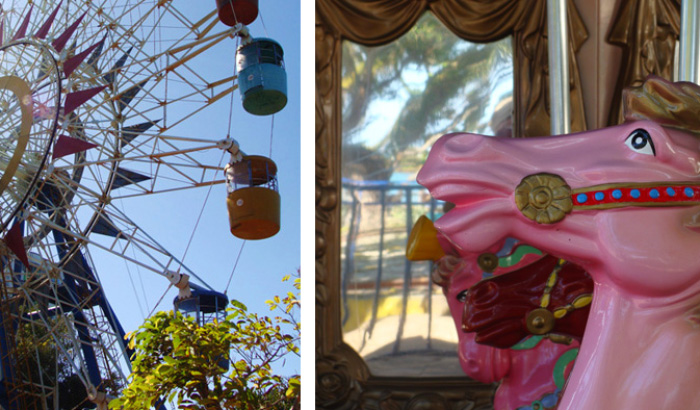 My second destination in South East Asia was Vietnam, which holds a special place in my heart. I lived and worked there in 2007, and it was fascinating to return to this country which blends communist government with full-speed-ahead development.
My second destination in South East Asia was Vietnam, which holds a special place in my heart. I lived and worked there in 2007, and it was fascinating to return to this country which blends communist government with full-speed-ahead development.
The beach town of Nha Trang is a perfect example. Years ago a quiet destination, it now caters to tourists, primarily from Russia. From dual-language signs to borscht on the menu, I felt immersed in two very different cultures.
While walking on the beach one day, I spied some scarlet flowers from the boardwalk. The vibrancy of the petals caught the light and created a brave contrast to the hard ground surrounding it. Just beyond the flowers were a Ferris wheel and other midway rides collecting weeds and rust. Two security guards looked at me curiously, and I back at them—why guard a place that has clearly not been used in years?
Central Market, Hoi An Ancient Town, Central Vietnam
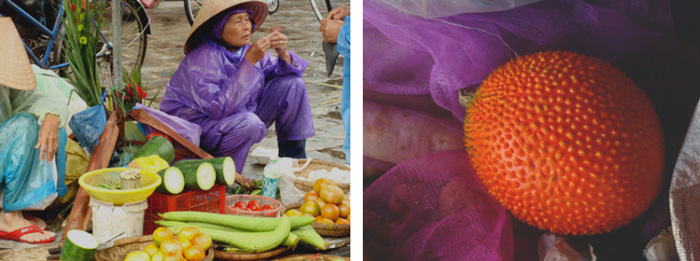 Vietnamese cuisine is a personal favourite—from the million ways to make rice to the liberal use of fresh herbs. Hoi An Ancient Town in Central Vietnam is a UNESCO World Heritage Site with a thriving food culture. The popular restaurant, Mermaid offered one of the first English-language menus in central Vietnam and still sources ingredients from Cho Hoi An, the fresh food market across the street.
Vietnamese cuisine is a personal favourite—from the million ways to make rice to the liberal use of fresh herbs. Hoi An Ancient Town in Central Vietnam is a UNESCO World Heritage Site with a thriving food culture. The popular restaurant, Mermaid offered one of the first English-language menus in central Vietnam and still sources ingredients from Cho Hoi An, the fresh food market across the street.
As part of a cooking class, I went to Cho Hoi An and took a guided tour of Vietnamese cooking staples. The market vendor above is dressed for the consistent Vietnamese rainfall. A gorgeous plant creature called gấc, or spiny bitter gourd. It's part of the cucumber family and has a short harvest season, from December to January. Gấc is used primarily for colour and flavour in the sticky rice dishes served during Tet, the Vietnamese New Year.
Marble Mountain, Da Nang, Central Vietnam
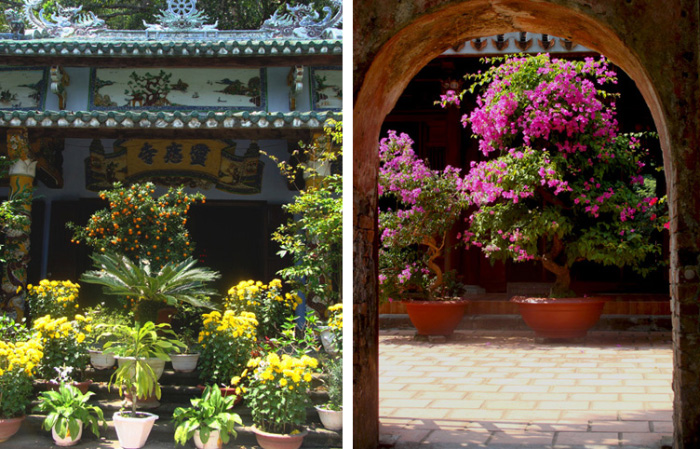 Da Nang's Marble Mountain is a strange and wonderful place. Just outside the port city proper, the five mountains are named after the five elements and host winding staircases, grottoes, pagodas, and caves with ancient Buddha and Quan Am statues. At the base of the mountains, marble statuary and religious relics are sold, a quintessential mix of sacred and commercial.
Da Nang's Marble Mountain is a strange and wonderful place. Just outside the port city proper, the five mountains are named after the five elements and host winding staircases, grottoes, pagodas, and caves with ancient Buddha and Quan Am statues. At the base of the mountains, marble statuary and religious relics are sold, a quintessential mix of sacred and commercial.
My friend Hoa told me that she often came to the mountain as a young girl, and her family would bring candles and lanterns to navigate the slippery walkways, which are now well-worn stairs with adjacent elevators. The mountains are part of a bigger history as well: Da Nang city was an American stronghold during the war, and the caves were hiding places for Viet Cong soldiers.
The landscaping on Marble Mountain is an example of how potted plants, rather than soil beds, are a popular gardening feature in the region. Above, golden chrysanthemums and a kumquat tree adorn the front of a pagoda as symbols of good luck and prosperity. The bougainvillea bonsai attests to the careful shaping of shrubs which is an honoured Vietnamese art form.
Photo credits: Melissa Benner

